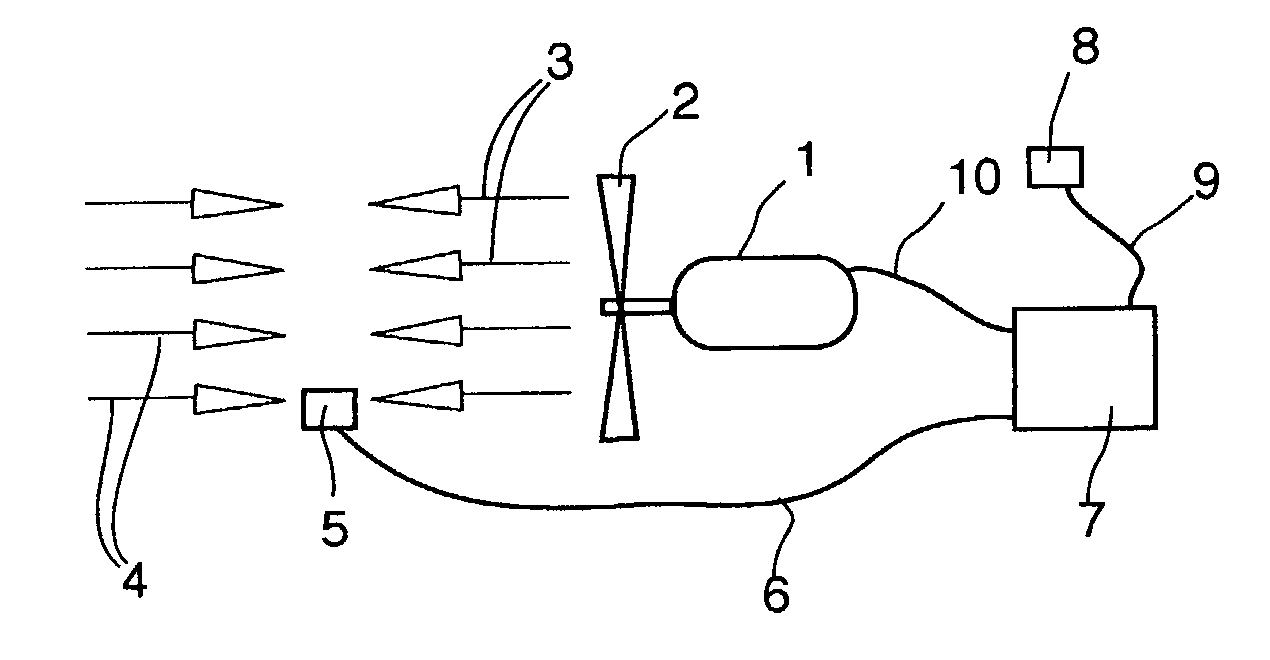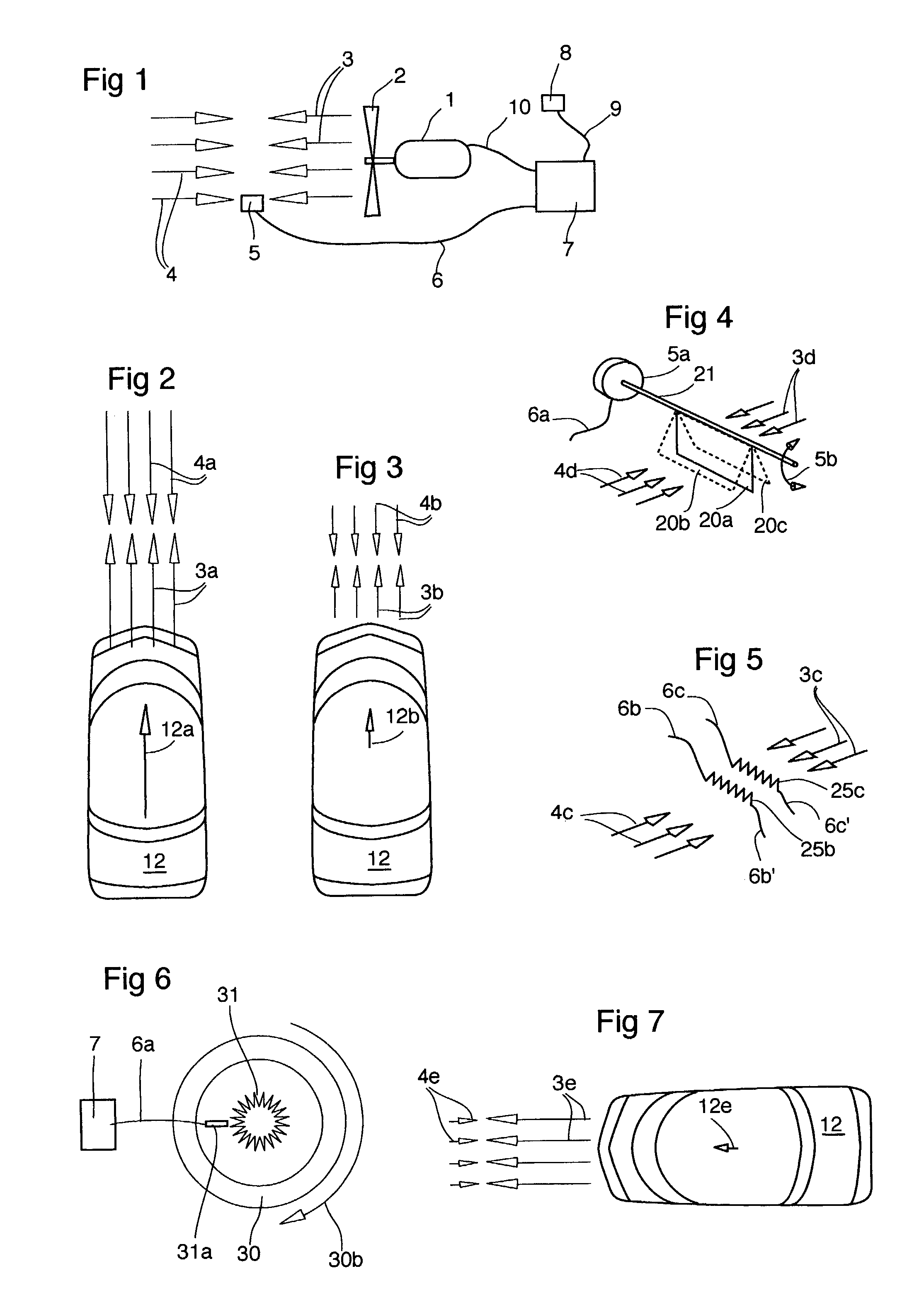Bi-directional automotive cooling fan
- Summary
- Abstract
- Description
- Claims
- Application Information
AI Technical Summary
Benefits of technology
Problems solved by technology
Method used
Image
Examples
Embodiment Construction
[0039]In FIGS. 1–5 and 7, air velocity / pressure is shown by arrow-headed straight lines wherein longer lines represent higher speed (or force) and arrowheads show direction of fan air flow 3 and ram air flow 4.
[0040]Referring to FIG. 1 electric motor 1 drives fan blades 2 in reverse mode creating a forward fan air flow 3 opposite in effect to the inlet ram air flow 4 created by vehicle's road speed. When flows (or pressures) 3 and 4 are equal and opposite, there is zero net air flow into engine bay (not shown) and onto cold engine. Fan motor 1 is powered by control circuit 7 through wire 10. Circuit 7 receives ‘too cold’ temperature signal from engine temperature sensor 8 via wire 9. In a preferred embodiment, control circuit 7 may also receive vehicle's road speed signal from vehicle road speed sensor 5 via wire 6. Vehicle road speed may be sensed from ram air speed (shown in FIGS. 1, 4, 5), electronically (one example shown in FIG. 6), or fan motor power variations (not shown). Wh...
PUM
 Login to View More
Login to View More Abstract
Description
Claims
Application Information
 Login to View More
Login to View More - R&D
- Intellectual Property
- Life Sciences
- Materials
- Tech Scout
- Unparalleled Data Quality
- Higher Quality Content
- 60% Fewer Hallucinations
Browse by: Latest US Patents, China's latest patents, Technical Efficacy Thesaurus, Application Domain, Technology Topic, Popular Technical Reports.
© 2025 PatSnap. All rights reserved.Legal|Privacy policy|Modern Slavery Act Transparency Statement|Sitemap|About US| Contact US: help@patsnap.com


